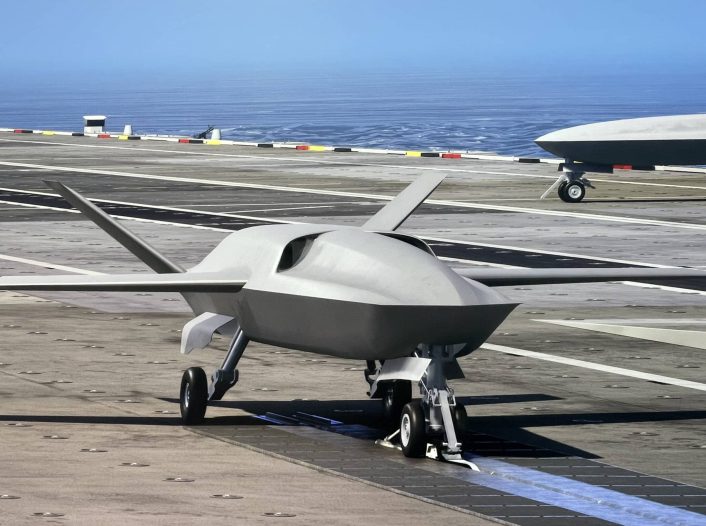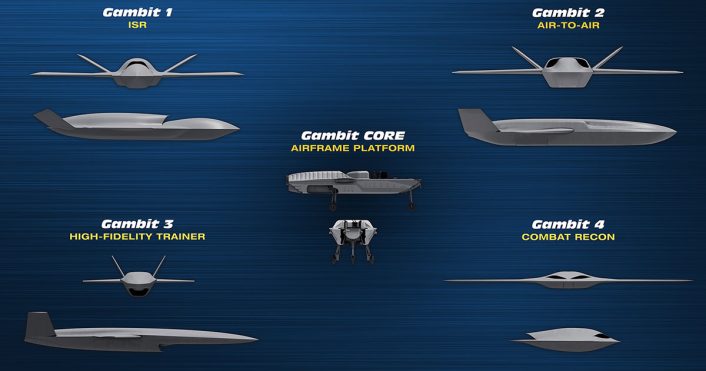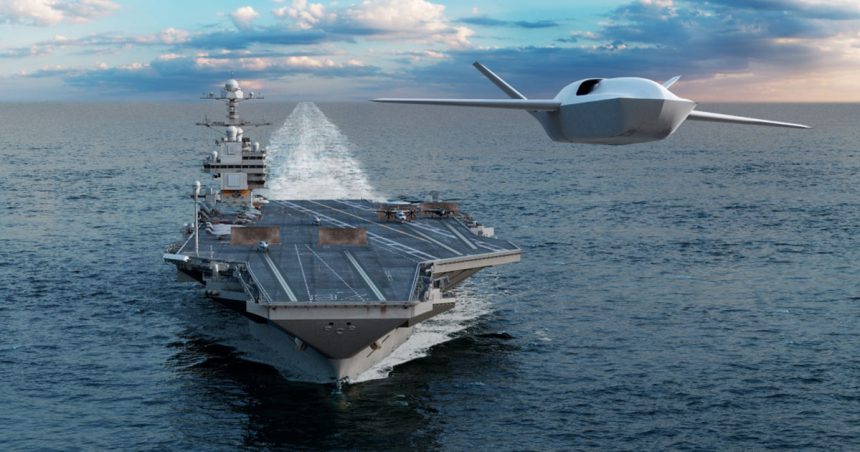General Atomics Aeronautical Systems, Inc. confirmed it has been selected by the U.S. Navy for the design of its Collaborative Combat Aircraft, which will be part of the future Carrier Air Wing.
General Atomics Aeronautical Systems, Inc. (GA-ASI) has announced the award of a contract by the U.S. Navy to develop the conceptual design for a carrier-based Collaborative Combat Aircraft (CCA). It is unclear when the contract was awarded, as a date was not provided in the press release.
Breaking Defense recently reported about a slide from the Program Executive Office for Unmanned Aviation and Strike Weapons – or PEO(U&W), dated Aug. 20, which mentioned contracts to Anduril, Northrop Grumman, Boeing and General Atomics in support of this effort. Anduril and GA-ASI are also working on the U.S. Air Force’s CCA program.
GA-ASI Naval CCA
GA-ASI says it will work “on Navy CCA designs emphasizing a modular approach to platform selection, capable of being rapidly reconfigured and upgraded to meet changing mission requirements, including operations on and from aircraft carriers.” The aircraft is planned to become part of the future Carrier Air Wings, initially working alongside 4th and 5th gen aircraft and, in future, complementing the new F/A-XX.
“We’re honored by the vote of confidence from the U.S. Navy and we’re eager to put what we’ve built to work for the future fleet. No one has more experience than we do with unmanned combat aircraft and we’re leveraging that to help the Navy get this capability onto the flight deck fast.”
David R. Alexander, GA-ASI President
According to the press release by GA-ASI, the Navy is adopting a plan to field the CCAs which is similar to the Air Force’s CCAs Increments. In fact, the company mentions its approach to this effort “supports the Navy’s revolutionary acquisition strategy of smaller, frequent purchases that enable rapid technology insertion rather than traditional long-lifecycle programs.”

GA-ASI is currently involved in the Air Force’s CCA program, with its YFQ-42A production-representative unmanned fighter flying since late August. Given the collaboration between the two services, it is possible that the CCAs will present at least some similarities on systems and capabilities.
The artwork released by the company to announce the contract shows one of the platforms of the Gambit series, specifically the carrier-capable Gambit 5 first shown at the Farnborough International Airshow 2024. On that occasion, this was also shown being launched from the HMS Prince of Wales aircraft carrier with the Electric Launch System for Unmanned Aircraft developed by General Atomics.
Notably, Gambit 5 was also mentioned in the latest press release by GA-ASI, described as a “company-developed concept for ship-based CCA operations.” This could act as a blueprint to start the conceptual design of the platform requested by the Navy.
CCAs are highly capable, semi-autonomous jet fighters that complement and enhance traditional, human-piloted combat aircraft. Produced in high quantities at comparatively low cost, they let commanders shift risk away from human flight crews, enhance the sensing and other capabilities of legacy aircraft formations, increase lethality of the air wing, and maximize operational flexibility across the board.
The Navy’s CCA design will emphasize seamless coordination among manned fighters, uncrewed vehicles and support platforms; accommodate elevated risk profiles and reduce risk to crewed platforms; support and enhance 4th- and 5th-generation aircraft and complement 6th-generation aircraft; and maximize operational flexibility, cost efficiency and mission effectiveness.
GA-ASI press release
Gambit 5
Gambit is a family of high-performance autonomous combat aircraft based on a common ‘chassis’, known as the ‘Gambit Core’. The Gambit variants differ by their airframe, wing, engine, sensors and/or weapons, each addressing different mission sets. This is the same approach of the ‘genus/species’ concept which GA-ASI developed with the U.S. Air Force Research Laboratory (AFRL) as part of the Low-Cost Attritable Aircraft Platform Sharing (LCAAPS) program.

Before Gambit 5, the company already mentioned four different variants: Gambit 1, focused on Intelligence, Surveillance and Reconnaissance (ISR); Gambit 2, which integrates air-to-air weapons’ employment; Gambit 3, a high-fidelity target drone; Gambit 4, a stealthy, long endurance ISR drone.
When it was unveiled, GA-ASI said it currently had no plans to build a prototype of Gambit 5. However, the company mentioned that they expect this project to generate interest as a number of nations are interested in integrating Autonomous Collaborative Platform concept into their ships.
Competitors
As mentioned earlier, GA-ASI is one of the contractors selected to develop the Navy’s CCA. The others are Anduril, Northrop Grumman and Boeing, while Lockheed Martin is working on a “Common Control” system for the CCAs.
Anduril also confirmed its selection in an early September statement, as reported by Aviation Week, saying “We are focused on delivering an aircraft built specifically to the Navy’s distinct needs, at rapid speed and formidable scale.” The company is currently developing the YFQ-44A for the Air Force’s CCA program, with a first flight expected later this year.
.@RoyalNavy briefing on future unmanned rotary capabilities at #IMHelicon, but note the carrier landing MQ-28 Ghost Bat… #drone #drones pic.twitter.com/RQhjMAzNRx
— Gareth Jennings (@GarethJennings3) February 21, 2023
Boeing is already collaborating with the Navy in the unmanned aircraft sector with the MQ-25 Stingray unmanned tanker. Following an agreement with Australia, Air Test & Evaluation Squadron Two Four (UX-24) – which conducts Research, Development, Test, and Evaluation (RDT&E) on Group 1-5 UAS – is also training to fly the MQ-28 Ghost Bat, developed by Boeing Australia for the Royal Australian Air Force.
In the past, Boeing has shown in an official briefing a navalized variant of the MQ-28 landing aboard a Queen Elizabeth-class aircraft carrier. The aircraft was notably shown with an arrestor hook, although other modifications could not be seen due to the low resolution of the image.
We currently have no information regarding Northrop Grumman participation. However, Aviation Week reported that the company is working with a “range of customers” on CCA designs, quoting Tom Jones, Northrop Grumman’s Corporate Vice President and President of Aeronautics Systems.









